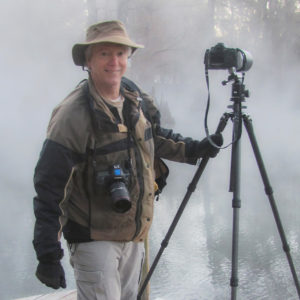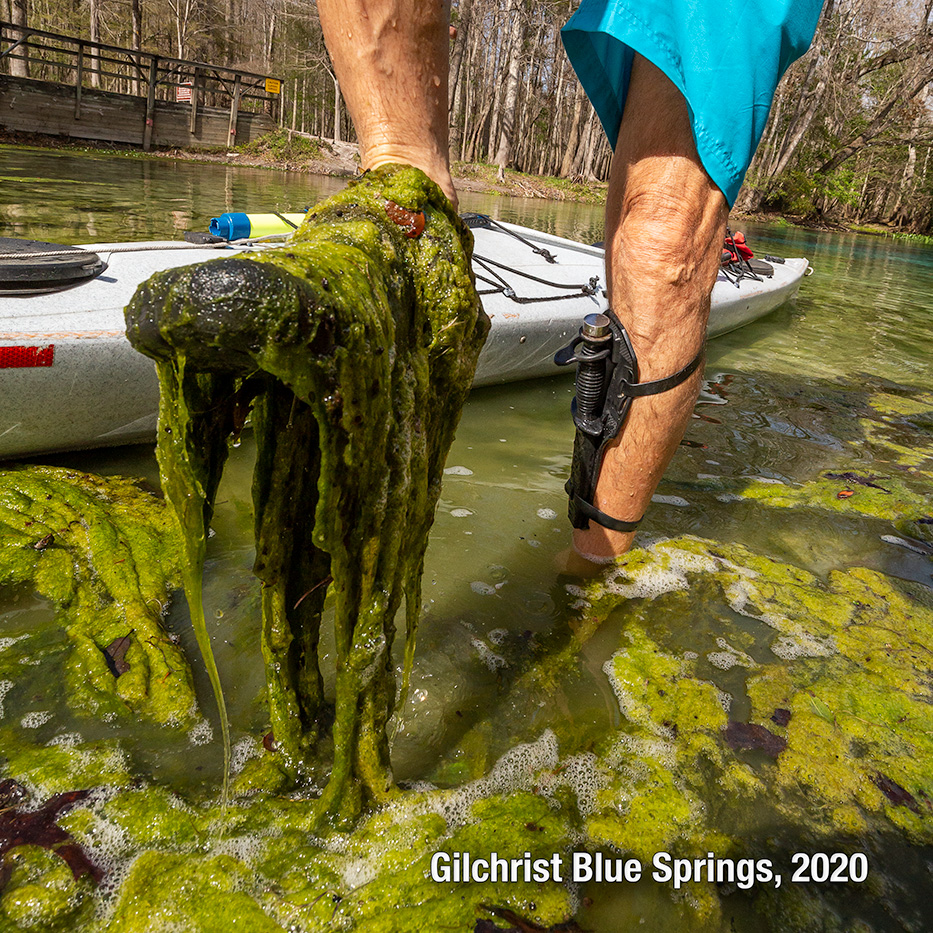By John Moran, water advocate
It’s a fair question: Since the Florida Legislature passed the Clean Waterways Act of 2020, why is the Santa Fe River Bill of Rights (SAFEBOR) campaign still pushing for a Bill of Rights for the river?
Here’s a hint: despite the act’s catchy title, Tallahassee isn’t coming to the rescue. Looking under the hood, this bill does nothing to reduce the dominant source of pollution ravaging the beloved rivers and springs in my part of Florida.
How can this be? Here’s another hint: Follow the money. With the support of nearly every major polluting industry in Florida, the Legislature has once again prioritized polluter profits over protecting public waters.

But wait, there’s more: the bill also preempts local government anywhere in Florida from recognizing Rights of Nature.
So how did we get here?
Consider the bizarre pronouncement from Republican state Rep. Chuck Clemons last year in the wake of the worst water crisis in state history, Florida’s infamous 2018 Summer of Slime.
Clemons boldly stated in a Gainesville Sun opinion column, “Florida’s environment is getting better. Much better. And that is directly tied to the leadership of Florida.”
Incredulous, I grabbed my cameras and went to more than a dozen springs on the Santa Fe and Suwannee rivers last summer, searching for evidence that our springs really are getting better.
I found no cause for celebration. The pictures I took tell the tale. What I found broke my heart and pissed me off. In almost every spring in the Suwannee River Valley, disgusting and noxious slime—fueled largely by agricultural fertilizer and manure—is now the new normal.
The most magnificent natural springs on the planet are becoming aquatic wastelands. They’re dying on our watch.

We were told 2020 was going to be the year that Tallahassee ditched the blinders and embraced clear vision. Instead we got legislative malfeasance masquerading as responsible oversight.
The governor could veto this defective bill but don’t hold your breath. In the words of the director of one of Florida’s leading environmental nonprofits, “Agriculture gets a free pass to pollute and Ron DeSantis is Rick Scott with a new coat of paint.”
So, what’s the status of the SAFEBOR campaign now?
With voter approval in November, Alachua County’s Home Rule Charter would be amended to recognize the right of the Santa Fe River to naturally exist and flourish and to assert our community’s right to a healthy river ecosystem and aquifer.
More than 4,000 voters signed our petition to place a Rights of Nature initiative on the ballot but that was well short of the required 18,094 signatures, so now it’s on to Plan B.
We’ve appealed to the County Commission and the Charter Review Commission to directly place SAFEBOR on the ballot despite the looming threat of legislative preemption.
With their own attorneys advising against it, why should either commission tangle with Tallahassee and risk an expensive lawsuit?
Simply put, Florida’s water is Florida’s lifeblood. And our waters are under siege. Job One for government is to foster public health, safety and welfare.
But an epidemic of indifference has swept through the Capitol. Our legislators have tested positive for dishonoring the intelligence of nature and the will of the people. They have defiled democracy itself.
We’re heading for a cliff and Tallahassee’s message is clear: We’re not going to fix this and neither are you.
Rights of Nature isn’t new and it’s not radical. Ancient wisdom is speaking, if only we will listen. The self-evident truth is that we need nature more than nature needs us.
It’s time for deep, systemic change. This moment demands brave political leaders who understand that Rights of Nature is an idea whose time has come.
Will Rights of Nature save the river? Perhaps the bigger question is this: Can Rights of Nature save us from ourselves?
A Bill of Rights for the river is a Bill of Rights for the future. It’s the right thing to do.
John Moran is a Gainesville-based nature photographer and water advocate.
“The Invading Sea” is the opinion arm of the Florida Climate Reporting Network, a collaborative of news organizations across the state focusing on the threats posed by the warming climate.



